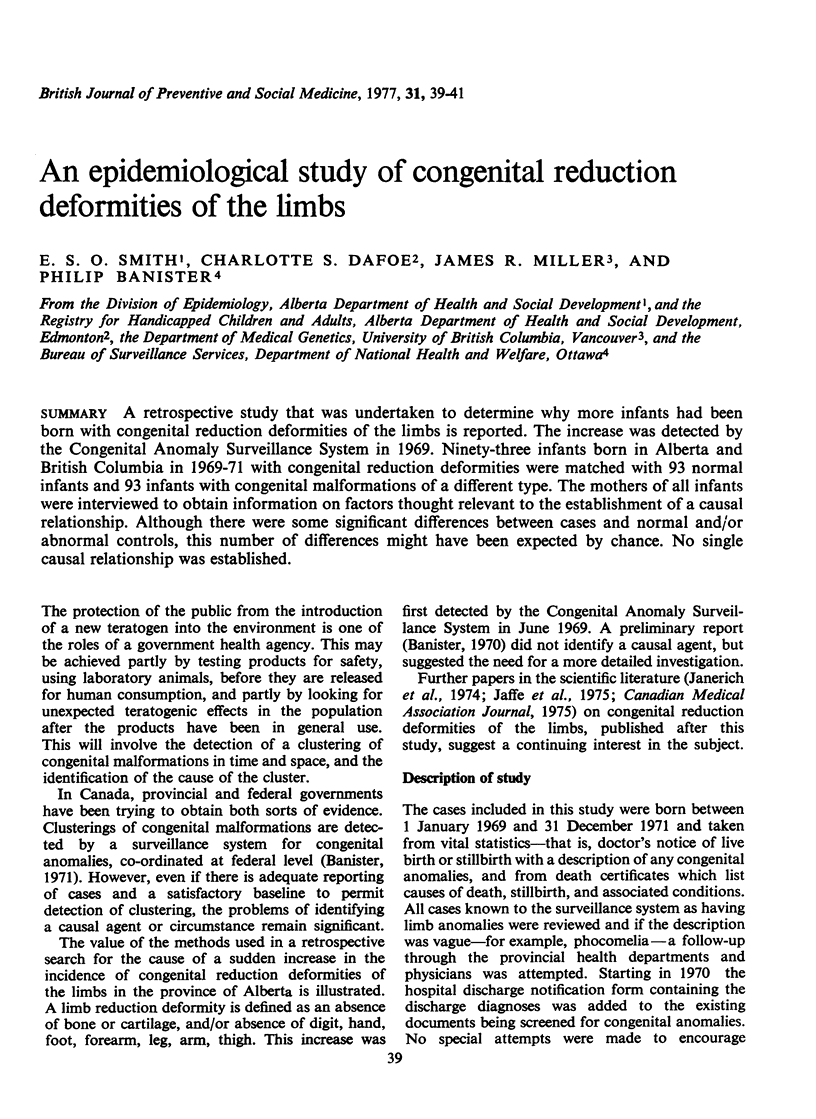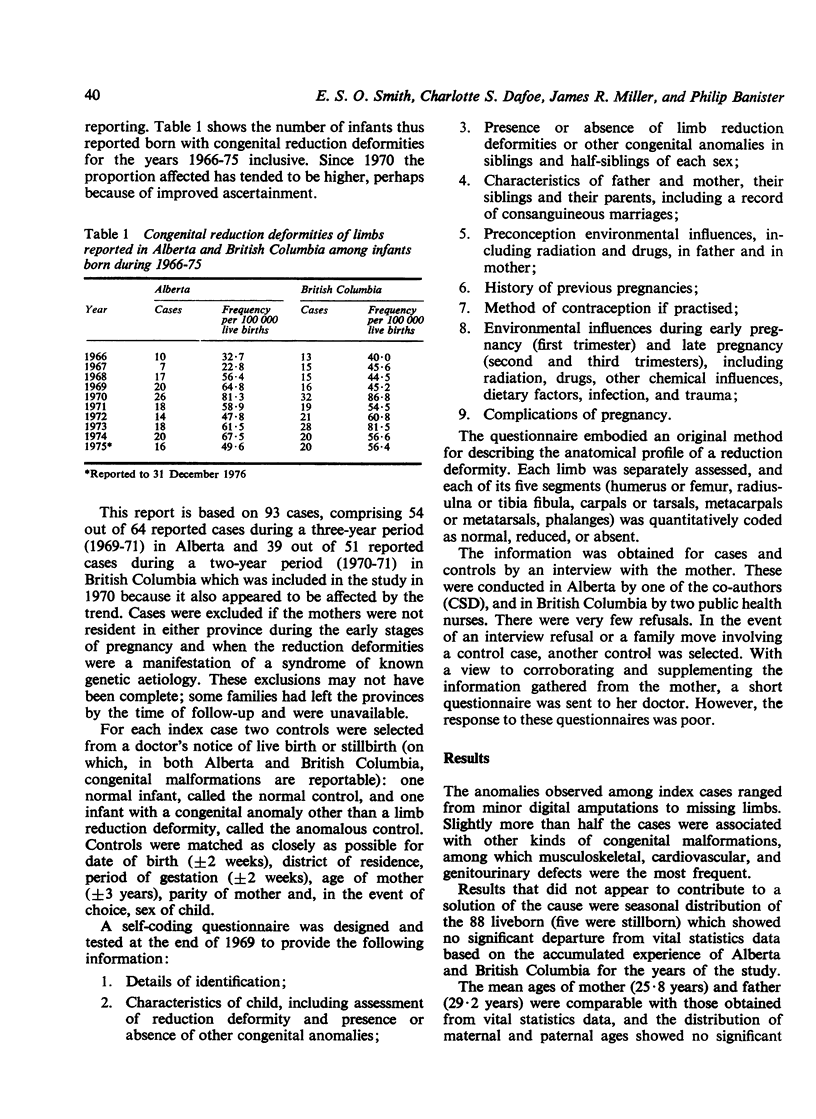Abstract
A retrospective study that was undertaken to determine why more infants had been born with congenital reduction deformities of the limbs is reported. The increase was detected by the Congenital Anomaly Surveillance System in 1969. Ninety-three infants born in Alberta and British Columbia in 1969-71 with congenital reduction deformities were matched with 93 normal infants and 93 infants with congenital malformations of a different type. The mothers of all infants were interviewed to obtain information on factors thought relevant to the establishment of a causal relationship. Although there were some significant differences between cases and normaland/or abnormal controls, this number of differences might have been expected by chance. No single causal relationship was established.
Full text
PDF


Selected References
These references are in PubMed. This may not be the complete list of references from this article.
- Banister P. Congenital malformations: preliminary report of an investigation of reduction deformities of the limbs, triggered by a pilot surveillance system. Can Med Assoc J. 1970 Sep 12;103(5):466–472. [PMC free article] [PubMed] [Google Scholar]
- Jaffe P., Liberman M. M., McFadyen I., Valman H. B. Letter: Incidence of congenital limb-reduction deformities. Lancet. 1975 Mar 1;1(7905):526–527. doi: 10.1016/s0140-6736(75)92877-9. [DOI] [PubMed] [Google Scholar]
- Janerich D. T., Piper J. M., Glebatis D. M. Oral contraceptives and congenital limb-reduction defects. N Engl J Med. 1974 Oct 3;291(14):697–700. doi: 10.1056/NEJM197410032911403. [DOI] [PubMed] [Google Scholar]


